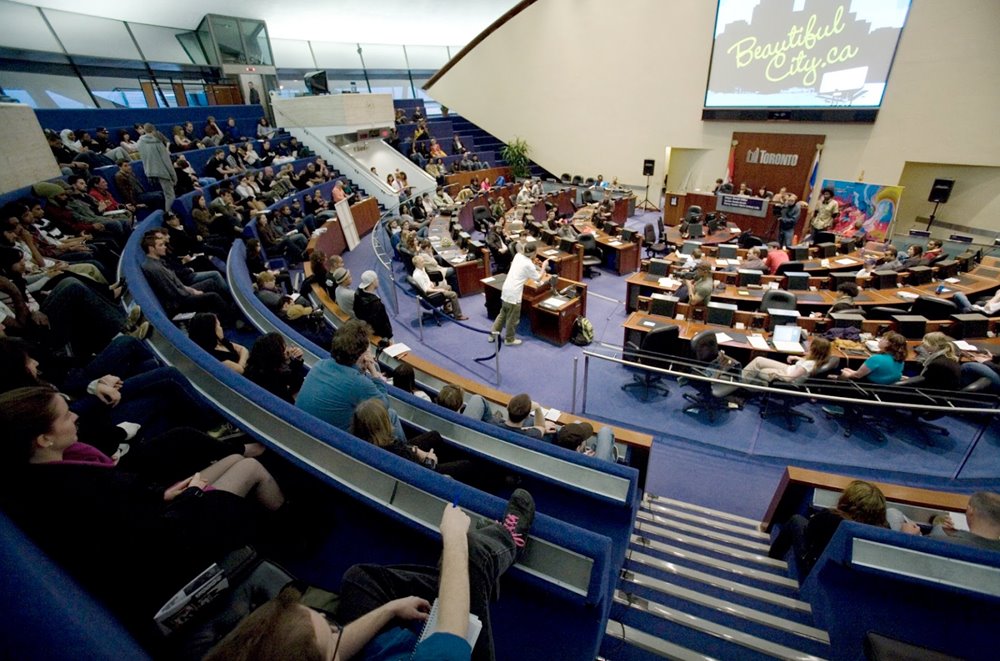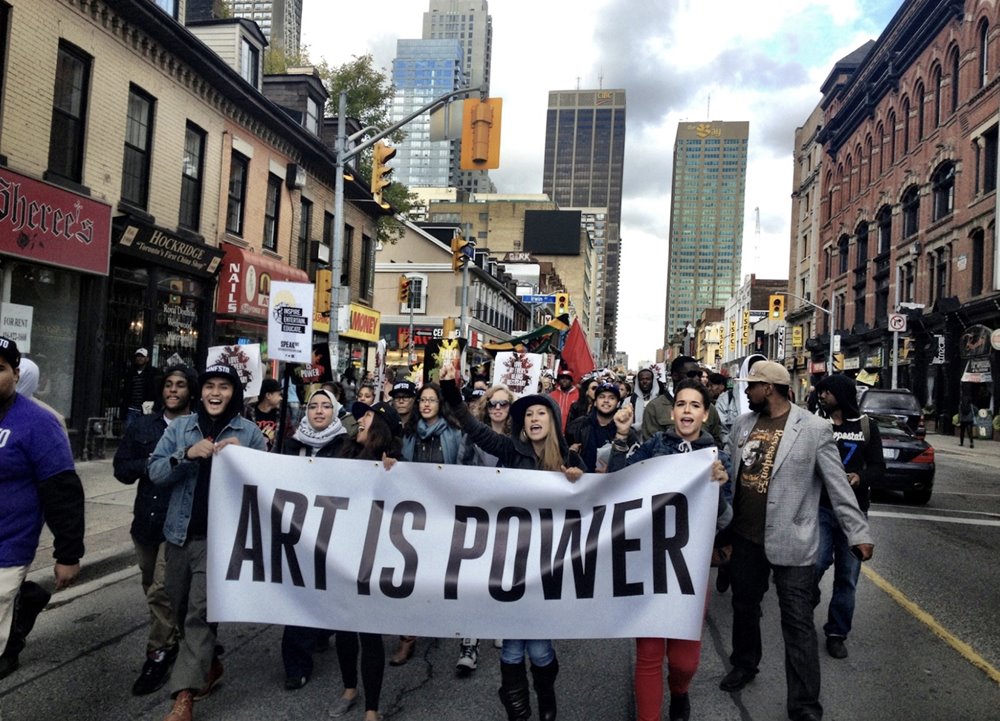20 Years of BeautifulCity
Featured Story
November 2021
BeautifulCity.ca 20 year anniversary video
|
|
In the fall of 2021, the City of Toronto launched ArtWorxTO: Toronto’s Year of Public Art. The program, which will run into 2022, features the development of public art projects within the city, both permanent and temporary, by local and international artists. It’s the start of the City’s 10-Year Public Art Strategy, “signalling Toronto’s renewed commitment to public art,” and “underscores a dedication to the arts sector as an essential component of a vibrant city.” The connection of public art, and the arts as a whole, to vibrant cities is an important one: it recognizes the public benefit of having visually stimulating, engaging and thought-provoking artworks in our gathering places.
 BeautifulCity Town Hall 2009, Meghan Janushewski, beautifulcity.ca 2009
BeautifulCity Town Hall 2009, Meghan Janushewski, beautifulcity.ca 2009
2021 also marks the 20-year anniversary of BeautifulCity.ca, a community-based initiative that ultimately transformed public and political support for arts funding in Toronto. Since the start of BeautifulCity.ca — a campaign to put a tax on outdoor advertising, and to invest that money in art in public spaces — an estimated $100M has been collected by the City’s Third Party Sign Tax, and Toronto Arts Council’s annual grants budget has nearly doubled.
It all started with one billboard. Devon Ostrom, who spearheaded the BeautifulCity.ca initiative, was invited to present ideas to the City’s Culture Division for its upcoming culture plan in 2001 at the Creative City Youth Consultations. He was seeking ideas to make the city better, when he looked up: “The first real spark I can remember was after looking at an art piece by Recka [a graffiti artist] where they painted art over a billboard,” he says. “It didn’t make sense to me that advertisers had nearly unrestricted access to shaping the visual environment while people who wanted to make spaces better were buried in permits, fees or much-much worse.”
Ostrom led with two ideas: the first is that public space is for the public. Yet advertisements representing private interests hold visual space that residents can’t avoid. “The billboard tax and regulation aimed to be a moderating force in public spaces,” Ostrom states. The second idea is that art is for the public, and can lead to the beautification of the city. Therefore, the reasoning was, a tax on billboards must be invested in the public in the form of art, and creative voices should get the opportunity to shape spaces as well. In addition to art in public spaces, BeautifulCity.ca advocated that revenue generated from the billboard tax should be invested in working artists and youth in underserved communities.
It took a lot of work to realize the initial vision. Ostrom recalls sending many emails, making many one-on-one phone calls, and maintaining detailed spreadsheets to mobilize interest and support among the arts community. Manifesto Community Projects, at the time led by Che Kothari, played a large role in growing support for the idea through its coalition of organizations, artists, designers, advocates and organizers. “Devon Ostrom’s ability to work with and galvanize young artists in support of bringing art to public spaces helped transform Toronto’s arts funding landscape” says Susan Wright, Deputy Director, Toronto Arts Council, who helped guide Ostrom through advocacy strategies.
 Art is Power Walk, 2012
Art is Power Walk, 2012
In all, a total of 60 organizations joined to form a coalition, including Toronto Arts Foundation, to advocate for the billboard tax and to have those funds invested in the arts. Deputations, town halls, surveys, an Art is Power walk, and relentless enthusiasm eventually saw the success of the initiative. In 2009 the billboard tax and regulation was passed. Following a legal fight that went all the way to the Supreme Court, the City’s new sign tax was legally recognized in 2012.
The artists and community groups agreed that Toronto Arts Council should be the recipient of increased funding. TAC’s position as an arms-length funding agency to the city, the fact that we’re governed by artists, and the integrity of our adjudication process led arguments for this case. In our Priorities for New Funding visioning document that was released in 2012, TAC identified that of the anticipated increase, 50% would be directed to existing programs, and 50% would go to innovation and communities. For the latter, TAC would come to create seven new strategic programs, including Animating Toronto Parks, many of which fund art outside of the downtown core that’s free and open to the public. In 2013, TAC began funding the youth arts organization ArtReach, which supports community-based arts initiatives that engage youth from equity-deserving populations. Today, TAC invests nearly 23.5 million annually in Toronto’s artists and arts organizations.
A moment of inspiration sparked by art painted over a billboard grew to be a mobilizing force that garnered support from across Toronto’s arts sector. This youth-led, grassroots, community-based initiative inspired the taxation of outdoor advertising, and ensured political support for a significant increase in arts funding. This year, the city and its residents are celebrating and experiencing the benefits of public art; a continued affirmation that art makes a city more beautiful, in so many ways.
LEARN MORE
A visual timeline c/o BeautifulCity.ca Facebook
BlogTO 20-yr anniversary article, A simple billboard tax generated $100 million to make Toronto more beautiful
TAC Supports ArtReach: https://vimeo.com/68339379